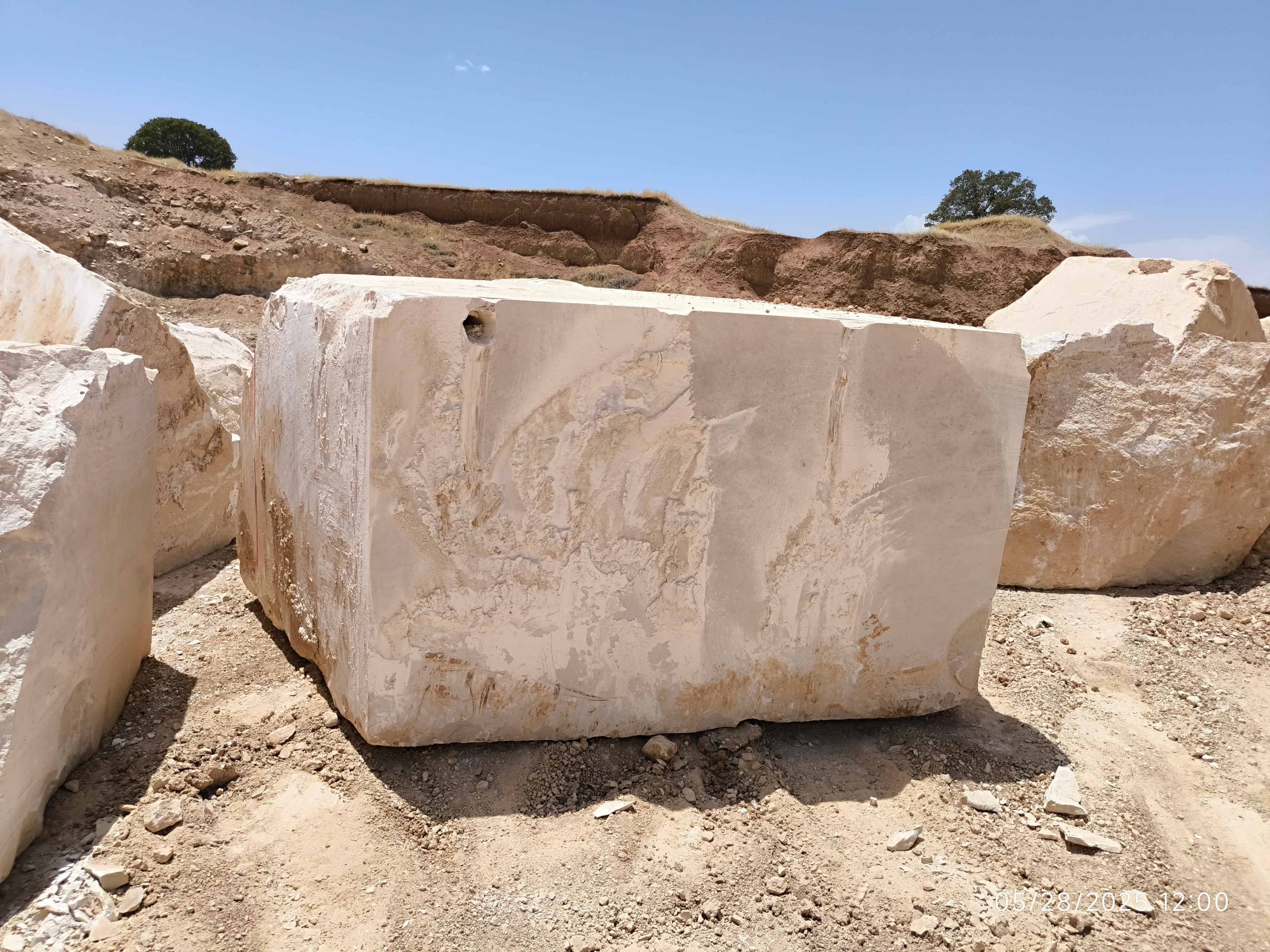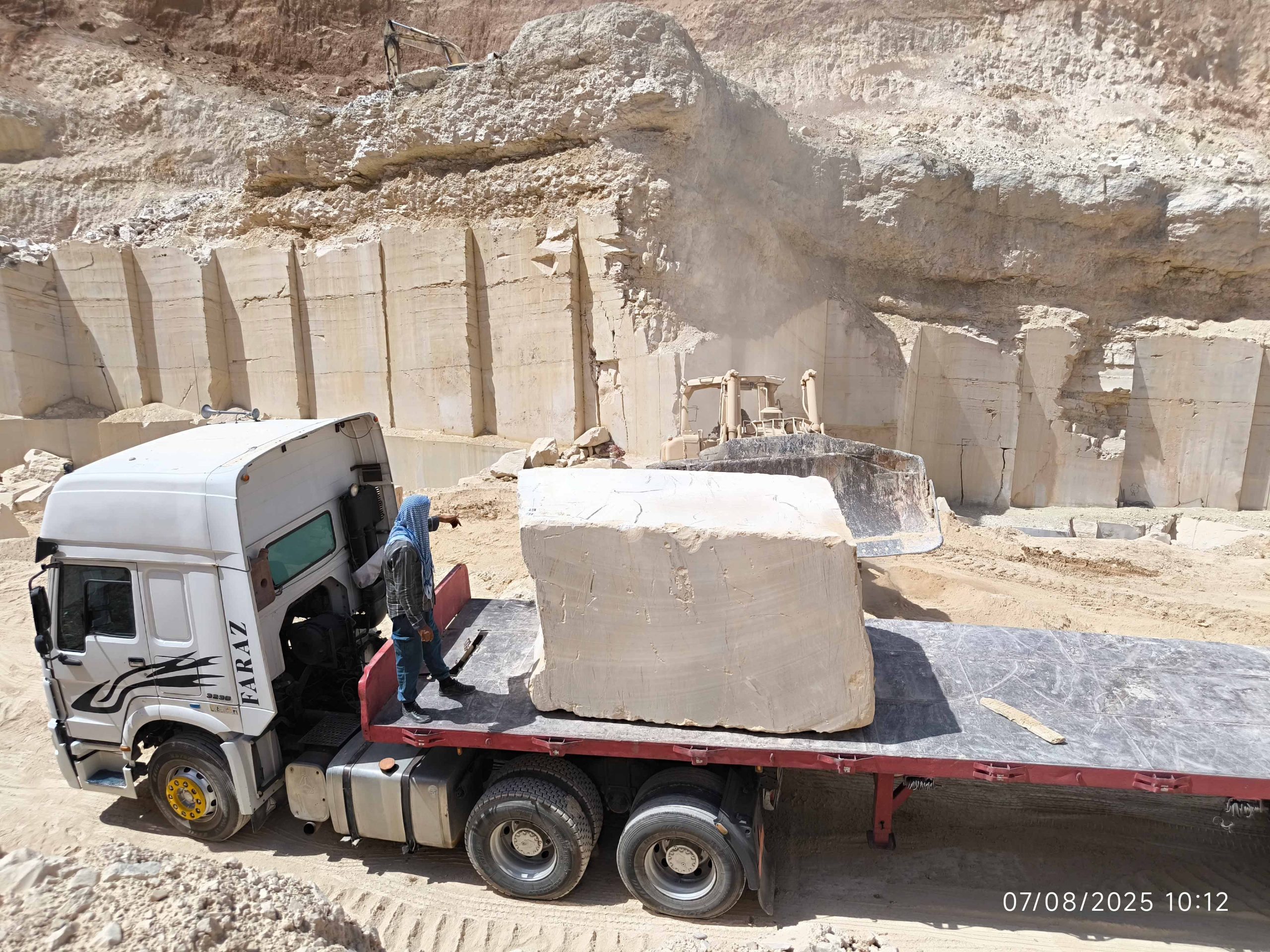
Khorramabad Gohareh Stone (Limestone Marble): A Treasure from the Zagros Mountains
Khorramabad Gohareh Stone, known as “Limestone Marble” or “Khorramabad Calcite Marble”, is one of Iran’s exceptional and unique natural stones, extracted from the mountains of Lorestan Province, particularly around Khorramabad city. Below are its key features and significance:
1. Geological Identity:
Classified as a metamorphic crystalline limestone, it formed over millions of years under intense heat and pressure. Original sedimentary limestone recrystallized into denser, harder “calcite marble” or “crystal limestone”.
2. Nomenclature:
The local name “Gohareh” (meaning “gem”) reflects its value and beauty to locals. “Limestone Marble” denotes its calcite composition and luxurious, marble-like crystalline appearance.
3. Dominant Color:
Features a base color of soft gray to silver. This neutral, serene backdrop highlights its natural patterns.
4. Striking Veins & Patterns:
Showcases intricate veins, clouds, wavy patterns, and occasional subtle fossils in white, pale gold, light brown, or faint green hues. Each slab is uniquely natural.
5. Texture & Finish:
When polished, it achieves a semi-gloss to high-gloss finish with a gentle sheen, enhancing its resemblance to premium marble. Texture is typically homogeneous with fine-to-medium crystals.
6. Key Advantage: Marble-like Aesthetics with Higher Durability
Gohareh’s strength lies in combining marble’s luxurious beauty with the hardness, resistance, and durability of dense limestone, making it ideal for high-traffic areas.
7. Technical Resistance:
– Hardness: Harder than pure marble, more scratch-resistant.
– Density: High density ensures longevity.
– Water Absorption: Lower than typical limestones, suitable for cladding and flooring.
– Compressive Strength: Good mechanical resistance.
8. Primary Applications:
– Interior/Exterior Cladding: Modern and classic spaces.
– Flooring: Halls, lobbies, corridors (residential/commercial).
– Staircases: Chosen for durability and elegance.
– Wall Coverings (Slabs/Waterjet): Kitchens, bathrooms, living rooms.
– Interior Decor: Tabletops, counters, accessories.
9. Limited & Exclusive Reserves:
Prime quarries are located in mountainous areas near Khorramabad. Quality and patterns vary between quarries and even layers.
10. Common Finishes:
Polished is the most popular, maximizing color and vein visibility. Leathered, Honed, and Sandblasted finishes are also used based on design needs.
11. Key Benefits:
– Unique beauty and marble-like luxury.
– Superior durability vs. pure marble.
– Neutral tones harmonize with diverse decors.
– Cost-effective alternative to luxury imported marble/granite.
– Supports Iranian industry/local identity.
12. Considerations:
– Like all calcite stones, sensitive to strong acids (vinegar, lemon, acidic cleaners); use pH-neutral stone cleaners.
– Proper installation and adequate thickness (e.g., 2cm for flooring) are crucial.
– Slab selection is vital for large projects due to natural variations.
13. Market Position:
Recognized as one of Iran’s finest decorative stones domestically, gaining international attention.
14. Difference from Pure Marble:
Pure marble (e.g., Dehbid or crystalline marble) is primarily calcite, often more colorful (white, cream, green, pink), but softer and more acid-sensitive. Gohareh, despite visual similarity, is harder and denser.
15. Extraction & Processing:
Quarrying requires precision to preserve large, intact blocks. Processing involves cutting, grinding, and polishing in equipped factories to reveal its innate beauty.
In summary: Khorramabad Gohareh Stone (Limestone Marble) is ideal for those seeking timeless marble elegance with practical durability and value. It symbolizes Iran’s natural wealth and the artistry of Lorestan’s quarries.
– Application Versatility: Specific use cases (facades, wet areas, luxury interiors) address diverse market needs.
– Export Readiness: Emphasis on packaging, compliance, and logistics speaks to B2B requirements.
– Aesthetic Appeal: Descriptions of veining, polish, and warm tones target design-conscious clients.
– Trust Indicators: Certificates, warranties, and QC processes reduce procurement risks.



